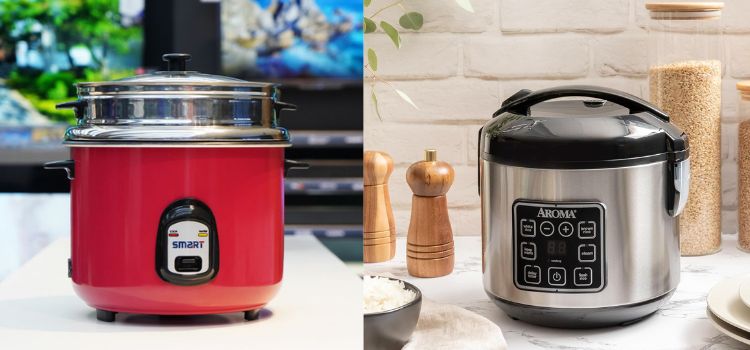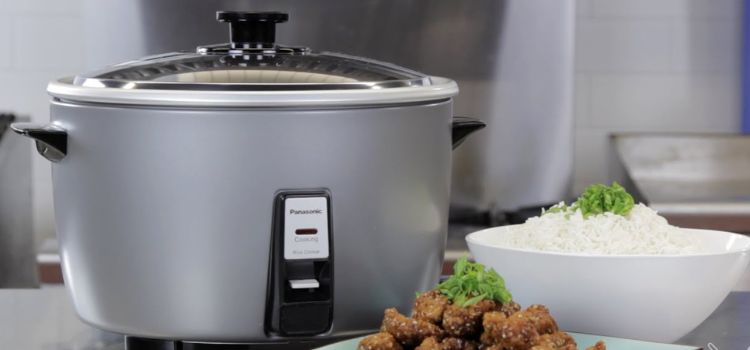As an Amazon Associate, I earn from qualifying purchases

If you’ve ever used a rice cooker, you may have experienced the frustrating phenomenon of it boiling over. This issue not only leaves a sticky, starchy mess to clean up but can also affect the texture and quality of your rice. Understanding why this happens is crucial to enjoying perfectly cooked rice without the hassle of overflow.
In this article, we’ll explore the common reasons behind rice cookers boiling over and provide practical solutions to prevent it, ensuring your rice cooking experience is smooth and mess-free.
Causes of Boiling Over
Excess Water
One of the primary causes of rice cookers boiling over is using too much water. Rice cookers are designed to maintain a specific water-to-rice ratio to cook rice perfectly. When this balance is disrupted, the excess water can create more steam than the cooker can handle, leading to overflow. This is especially true for rice varieties that absorb less water, such as jasmine or basmati. To prevent this, always measure the water carefully and stick to the recommended ratios for the type of rice you’re cooking.
Starchy Rice
Certain types of rice, like sticky or sushi rice, are naturally high in starch. As they cook, the starch in the rice dissolves into the water, forming a thick, foamy layer that can spill over the edge of the rice cooker. If you’re cooking a starchy variety, it’s essential to rinse the rice thoroughly before cooking. Rinsing removes excess surface starch, significantly reducing the likelihood of foaming and boiling over.
Overfilling
Rice cookers have a maximum capacity for a reason. Overfilling your cooker with rice and water can easily lead to boiling over. The expanding rice and steam need room to move, and when there isn’t enough space, the contents will overflow. Always check your rice cooker’s manual for the maximum rice and water levels and avoid exceeding them.
Tips to Prevent Boiling Over
- Adjust Water Levels: To prevent your rice cooker from boiling over, ensure you’re using the correct water-to-rice ratio. This might vary slightly depending on the rice type, so adjust accordingly. For instance, less water may be needed for long-grain rice, while short-grain varieties may require more. Experiment with small adjustments until you find the perfect balance for your preferred rice type.
- Rinse Rice Thoroughly: Rinsing rice under cold water until the water runs clear is a simple yet effective way to reduce starch content. This step removes loose starch from the rice surface, which can contribute to excessive foaming. Set the rinsed rice aside for a few minutes to drain before placing it in the cooker.
- Add Oil or Butter: Adding a small amount of oil or butter to the rice cooker can help minimize foaming. The oil coats the rice grains and reduces surface tension, which can help prevent bubbles from forming and overflowing. This method is particularly beneficial for starchy rice varieties that are more prone to boiling over.
Solutions if Boiling Over Occurs

- Immediate Cleanup: If your rice cooker does boil over, it’s essential to clean it promptly. Starchy water can dry and harden, making it difficult to remove later. Unplug the cooker and allow it to cool before wiping the exterior and interior surfaces with a damp cloth. Regular cleaning will help maintain the appliance’s functionality and longevity.
- Adjust Settings: Some rice cookers have adjustable heat settings. If boiling over is a persistent issue, try using a lower heat setting or a shorter cooking cycle. This can help reduce the amount of steam produced, minimizing the risk of overflow. Consult your rice cooker’s manual for specific adjustments you can make.
- Experiment with Rice Types: If you continue to experience issues, consider experimenting with different rice types. Some rice varieties, such as parboiled or converted rice, contain less starch and are less likely to boil over. Trying different types can help you find one that cooks well in your rice cooker without causing overflow.
Conclusion
Dealing with a rice cooker that boils over can be a nuisance, but understanding the causes and implementing preventive measures can make this a rare occurrence. By adjusting water levels, rinsing rice, and possibly adding a bit of oil, you can enjoy perfectly cooked rice without the mess. If boiling over does happen, cleaning up quickly and making adjustments to your cooking process can prevent future incidents.
With these tips, your rice cooker can become a reliable kitchen companion, delivering delicious results every time. Remember to experiment and find what works best for your specific rice cooker and preferred rice types. Happy cooking!
FAQ
How do I stop my rice cooker from bubbling over?
Prevent bubbling over by using the correct water-to-rice ratio, rinsing rice thoroughly to remove excess starch, and adding a teaspoon of oil or butter to reduce foaming. Avoid overfilling the cooker and use a lower heat setting if your rice cooker has adjustable controls.
Are rice cookers supposed to boil over?
Rice cookers are not supposed to boil over. Boiling over can occur due to excess water, starchy rice, or overfilling. Using the right water ratio, rinsing rice, and avoiding overfilling can prevent this issue, ensuring your cooker functions properly and your rice remains perfectly cooked.
Why does my rice always burn to the bottom of the rice cooker?
Rice burning at the bottom can result from insufficient water or using a high heat setting. Ensure you’re using the correct water-to-rice ratio, and consider stirring the rice halfway through cooking if your cooker allows. Regular cleaning of the cooker also helps maintain even heat distribution.
As an Amazon Associate, I earn from qualifying purchases